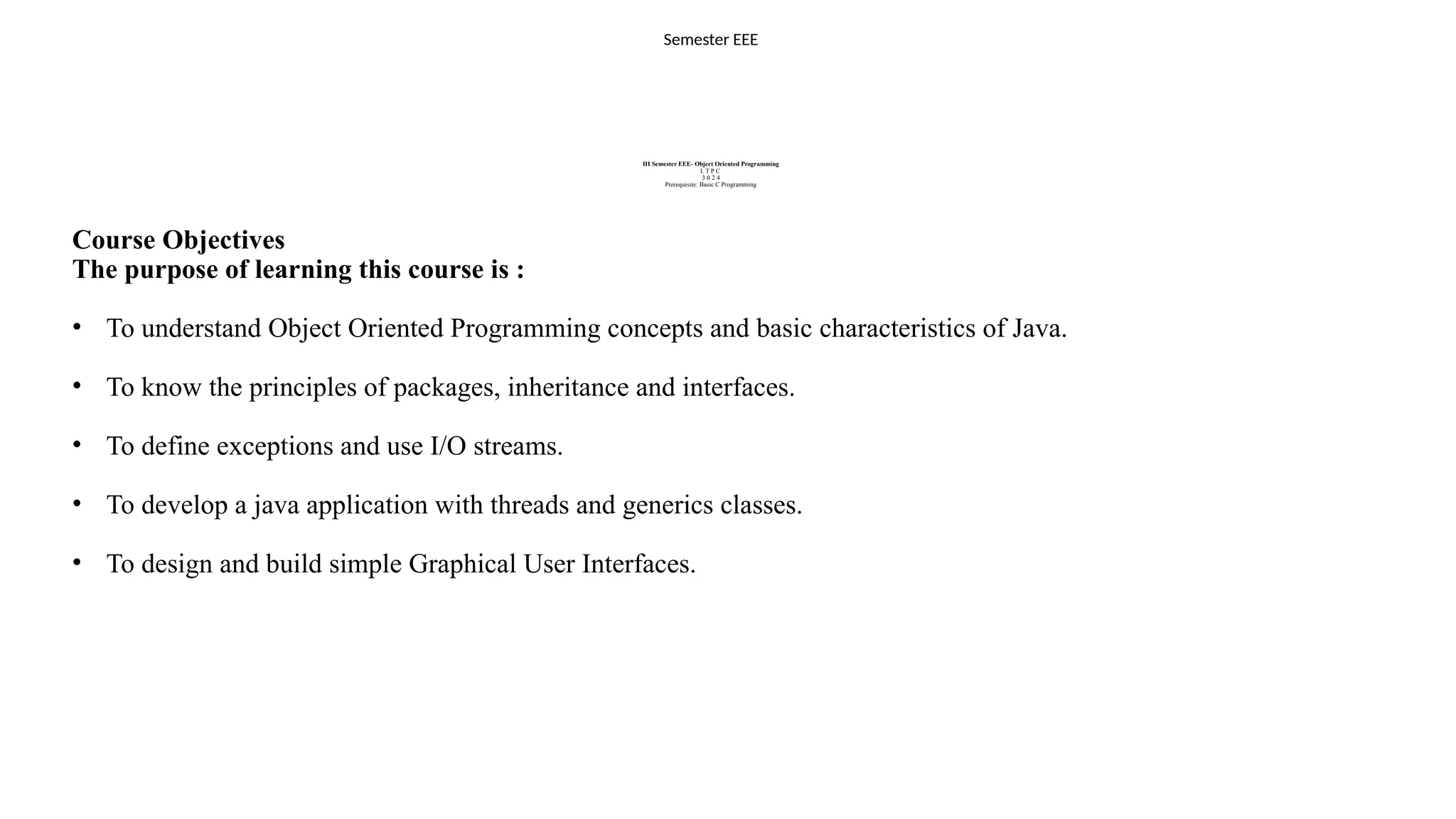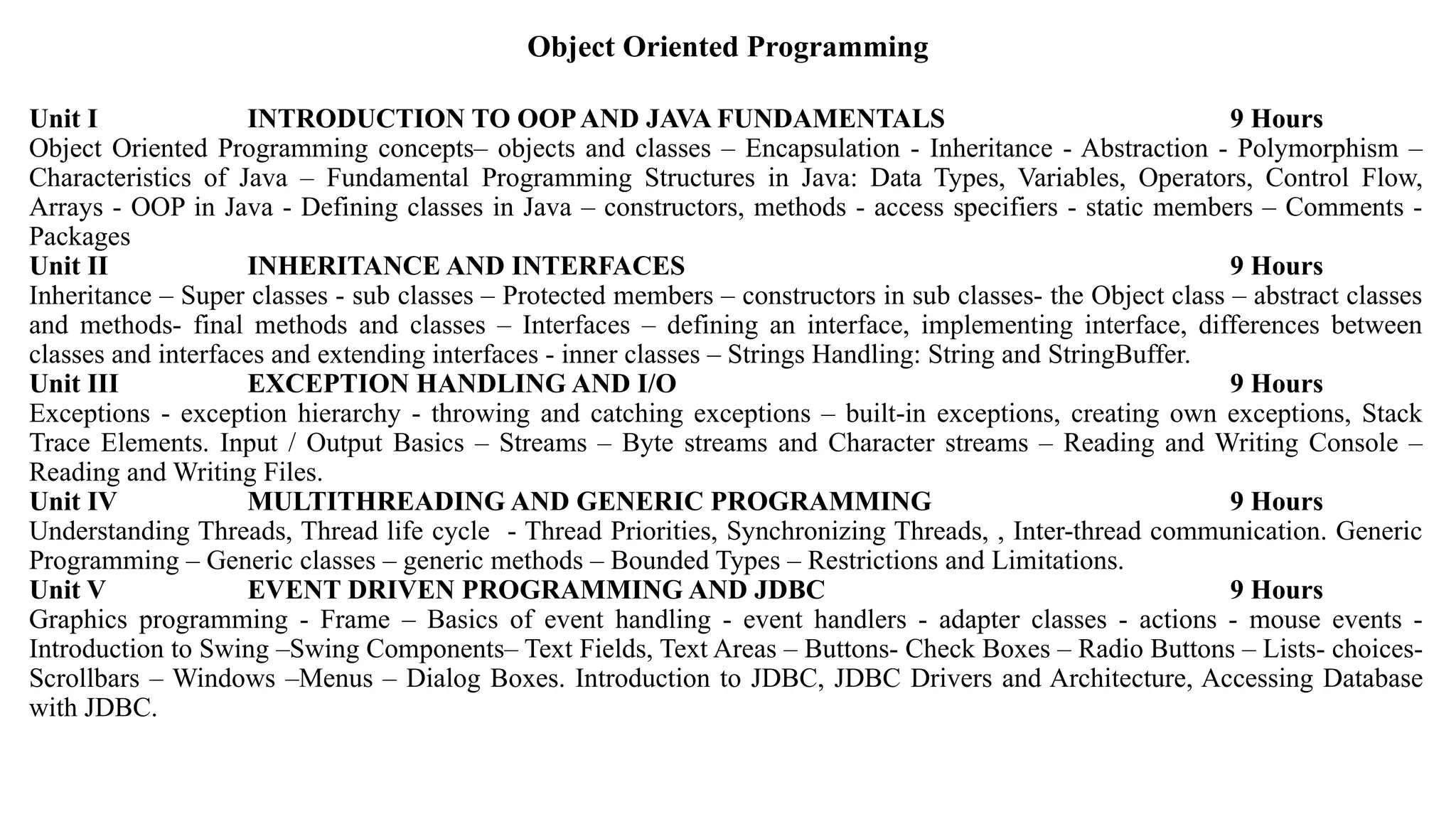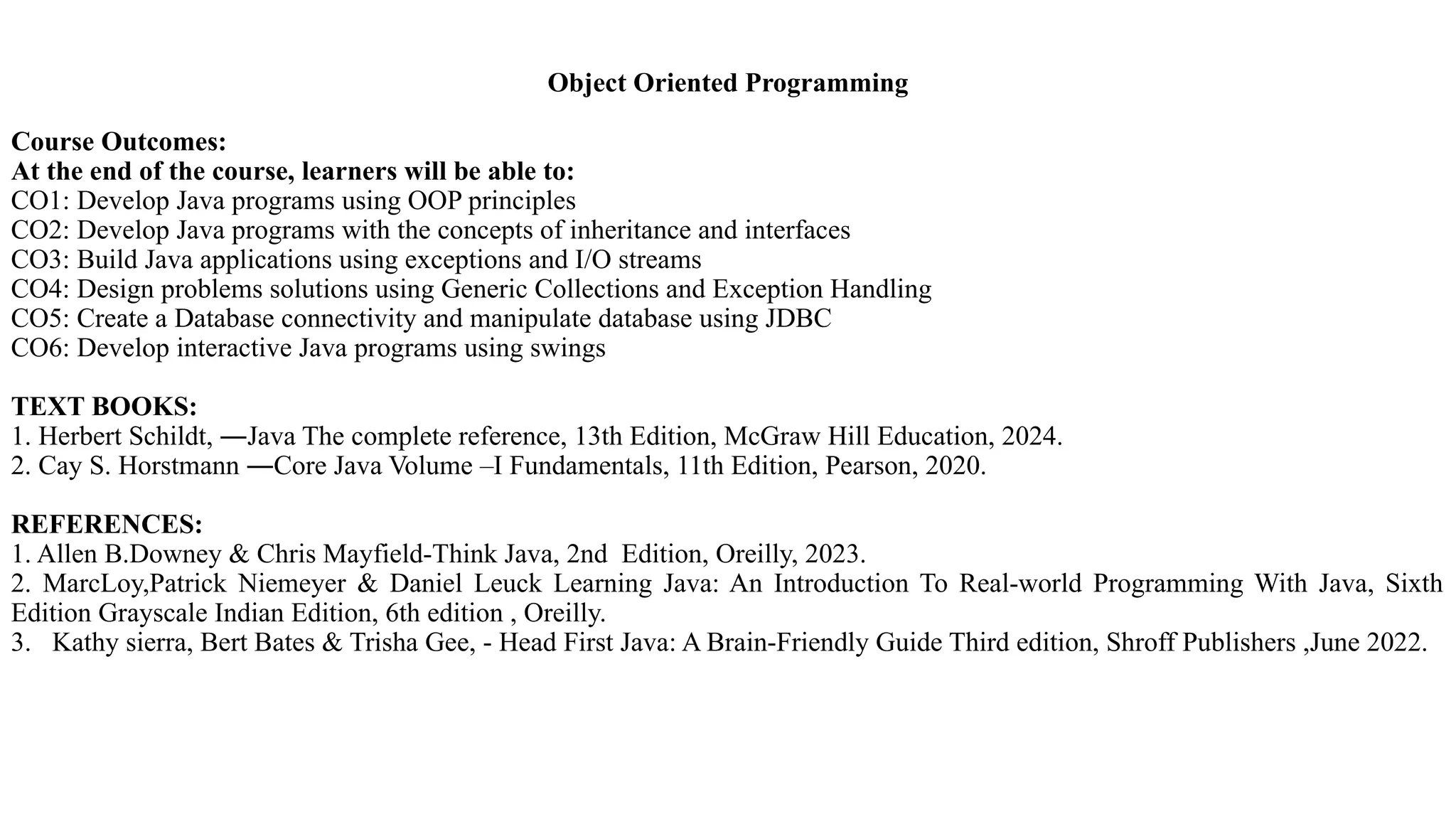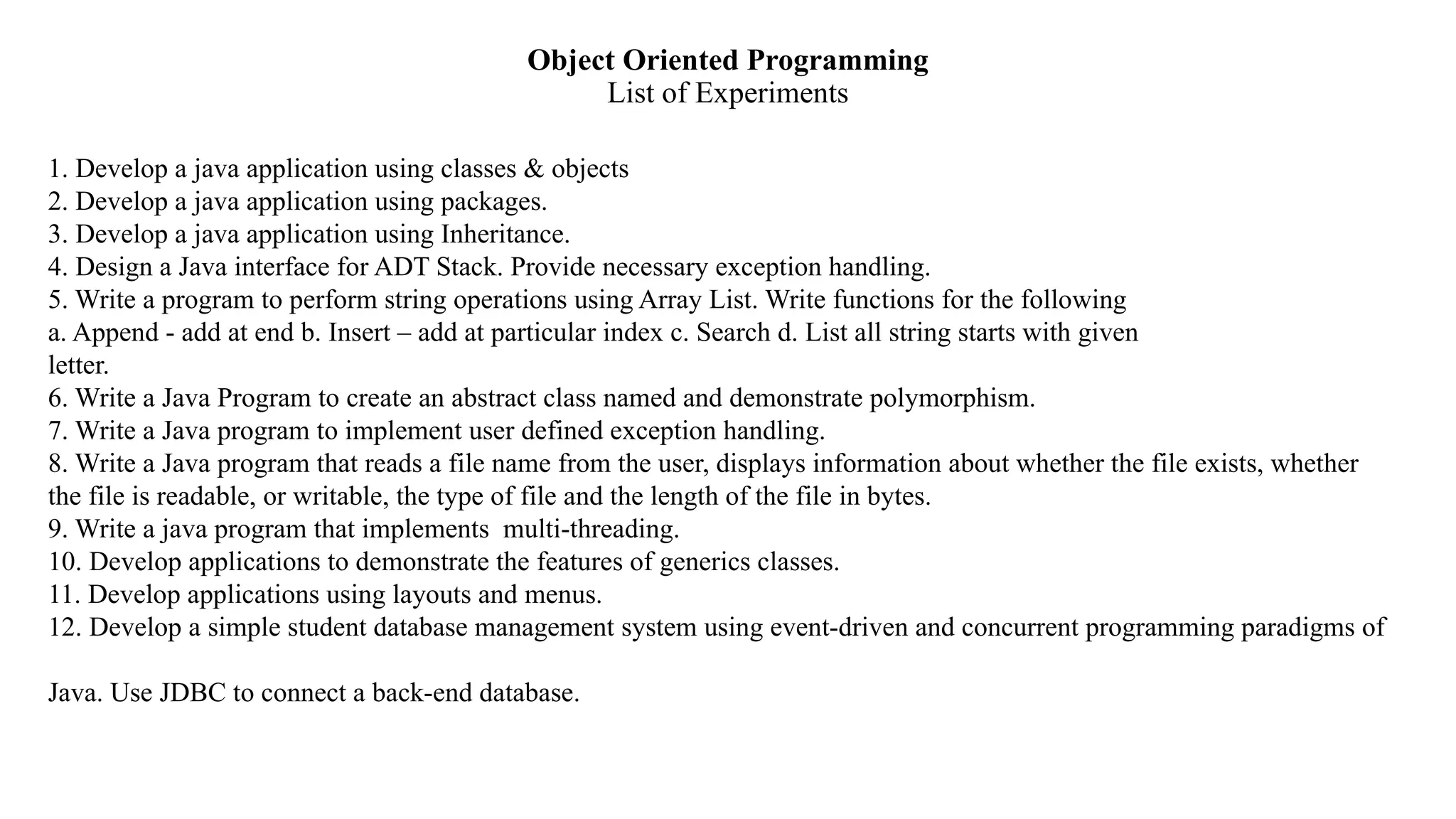This document outlines a course on Object Oriented Programming (OOP) using Java, including objectives, unit topics, and expected outcomes. It covers key concepts such as inheritance, interfaces, exception handling, multithreading, and JDBC for database connectivity. The course also includes practical experiments to reinforce learning objectives through hands-on Java application development.



